Sewing Hope: A Conversation on Alta Gracia and the Anti-Sweatshop Movement
ISN STAFF WITH JOHN KLINE | January 23, 2018
Editor’s Note: ISN spoke with John Kline, who co-authored Sewing Hope: How One Factory Challenges the Apparel Industry’s Sweatshops with Sarah Adler-Milstein.
Can you first briefly introduce us to Alta Gracia—its origins, business model, and current status?
The Alta Gracia apparel factory was started in 2010 in the town of Villa Altagracia in the Dominican Republic. This business was established in the abandoned building of an earlier garment factory that had functioned as a typical “sweatshop” before its Korean owners locked the doors and went elsewhere in search of lower-cost production, leaving local workers unemployed. Alta Gracia emerged from an unlikely collaboration between Joe Bozich, an apparel company executive, and Scott Nova, the head of a labor advocacy organization. Their vision was to establish a model apparel factory as a type of anti-sweatshop, paying workers a living wage, maintaining excellent health and safety standards, and respecting freedom of association and collective bargaining. Industry executives and many economists claim that such a venture is doomed to fail in the competitive environment of the apparel sector. Despite facing many obstacles as a small startup operation, Alta Gracia has maintained its high labor standards and is proving sustainable if not yet fully profitable.
Can you tell us about the history of the anti-sweatshop movement? Has this movement created any lasting change in the mainstream product/clothing production world?
The anti-sweatshop movement dates from the late 1990s and owes its existence to the activism of college and university students from around the United States. Students became aware of the terrible labor conditions in thousands of small garment factories in developing countries where major brand-name companies and large retail stores outsource production, including the T-shirts and sweatshirts bearing university names and logos. Student protests, including sit-ins at Duke, Georgetown and elsewhere, demanded that university administrations develop labor codes for any company licensing the university’s name. The collegiate apparel sector became the only segment of the industry to establish mandatory labor standards monitored by external organizations. This achievement improved some labor conditions but with thousands of contracted factories spread across many developing countries, monitoring compliance and requiring remediation of violations is an enormous, never-ending task. It’s something like the arcade game Whack-a-Mole – as soon as one factory violation is resolved, several more have popped up. Student support has remained strong, coordinated by the United Students Against Sweatshop (USAS) organization, but fundamental, lasting change will only come with a different factory model that values workers and treats them with dignity rather than exploiting them in a race for lowest-cost production contracts.
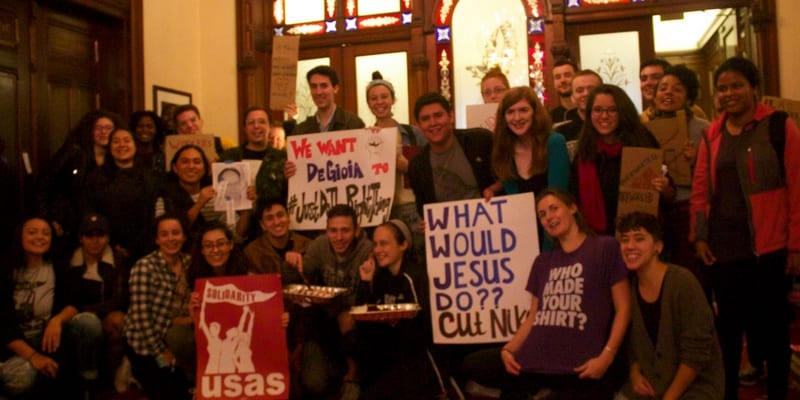
Georgetown University students gather outside the president’s office in a United Students Against Sweatshops-affiliated protest against Nike. [Photo: Cassidy Jensen]What products does the factory currently produce? To whom are these products most typically sold?
Although the Alta Gracia factory has the capability to produce various types of apparel, it currently produces mainly T-shirts and sweatshirts that are destined for the collegiate market. Most of the output is sold through campus bookstores, including those managed by Barnes & Noble, Follett and a number of independent university bookstores. There are some other types of garments displayed on Alta Gracia’s website that may be purchased through Amazon, Fanatics or Barnes & Noble. A new line of clothing is being developed through a partnership with the Dallas Cowboys and will be available through that organization as well as several universities. The company is exploring other garments that may be produced for bulk orders or for possible new retailers outside the collegiate market.
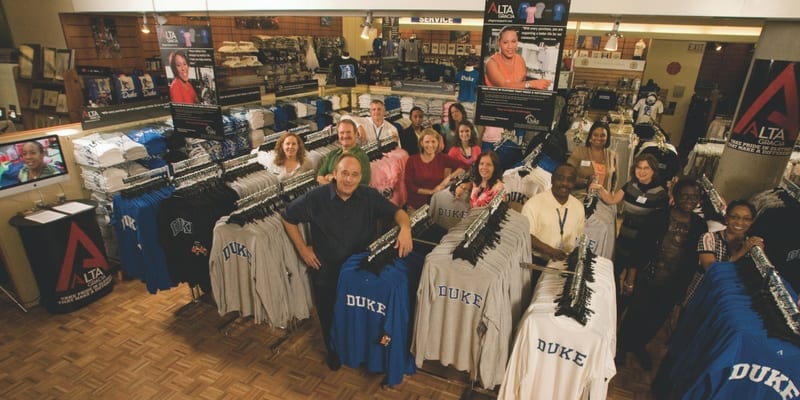
Jim Wilkerson (front), director of trademark licensing and Duke Stores at Duke University, placed early orders to support the new Alta Gracia factory. [Photo: Jim Wilkerson]
The driving motivation for writing this book was a desire to introduce Alta Gracia to a much wider general audience. The factory is poised to expand and develop new customers among the general population, but it cannot afford the extremely heavy cost of a campaign to establish itself in the broader marketplace. As an alternative, our hope is to generate recognition for Alta Gracia as a brand name based on decent labor standards rather than one that is created by expensive advertising and associated with celebrity endorsements. Sarah and I strongly support Alta Gracia’s further growth, but our fundamental goal is not simply an expansion of the factory, or even its replication by other startups. Real change will come to the industry when the existing major firms either become convinced or are pressured to adopt the Alta Gracia model of decent labor standards as a hallmark of the apparel sector. The significance of the Alta Gracia story springs from a recognition that, if this small start-up factory can overcome all the obstacles that it has faced and remain competitive with established brands, then there is absolutely no excuse for major brands and retailers to place orders with factories that must exploit their workers through sub-poverty wages and unsafe work conditions in order to meet lowest-cost production contracts. This is the real message of the Alta Gracia project.
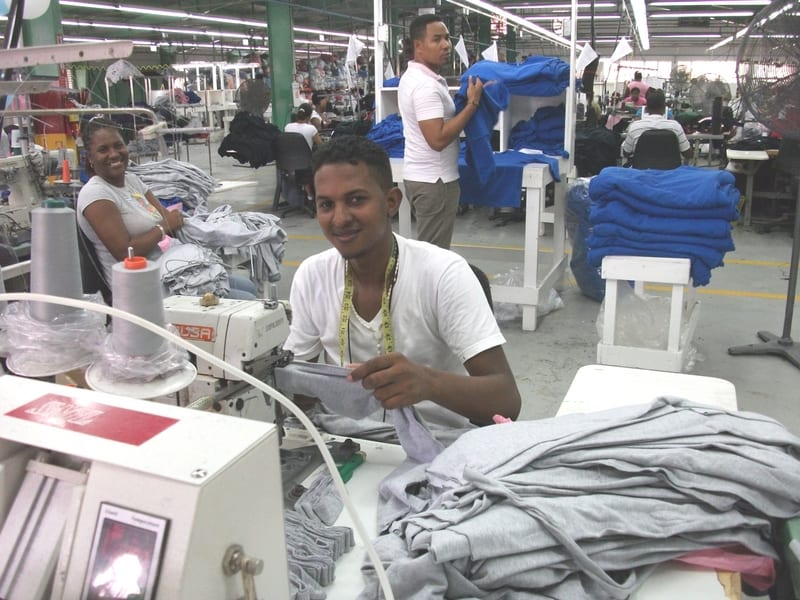
Julio Cesar Silverio works as a “trainer” at Alta Gracia, a title chosen by the company as an alternative to “supervisor.” Trainers are tasked with both training workers on sewing operations and serving as coaches to help teams to reach peak performance—optimizing team dynamics and fluid production opportunities.
Speak a bit more specifically about Alta Gracia’s business model. How does this serve both workers and customers/other stakeholders?
The essential core of the Alta Gracia business model is its commitment to treat workers as full partners in the production process, beginning with paying them a living wage that is roughly 3 times the local minimum wage. The resulting paycheck for each worker is the largest they have ever received and is transformative in their lives, as illustrated in many of the personal stories recorded in the book. But as numerous workers have told us, it is about more than the money. In Spanish the term living wage is translated as salario digno or wage with dignity. Workers at Alta Gracia are able to organize a union and bargain collectively. They are treated with respect in the workplace, listened to when they have complaints as well as when they have ideas or suggestions. Maintaining excellent health and safety standards is a high priority for both management and labor. Importantly, at Alta Gracia all these commitments are monitored and verified by an independent labor rights organization, the Worker Rights Consortium. This approach to labor relations has an impact on productivity that helps offset some of the additional cost of a living wage. For example, turnover in the average apparel factory runs at 50 to 60%, meaning at least one-half of the workers leave each year. Turnover at Alta Gracia has been roughly one-tenth this industry average. It takes about three months to train a new operator, with the person’s productivity improving gradually over time. By contrast, the experienced Alta Gracia operator who has stayed exhibits higher productivity and better-quality assurance. That worker values his or her job and wants to ensure that the company succeeds, and the job remains. I like to say that workers at most apparel factories vote with their feet and leave while Alta Gracia workers vote with their seat and stay. Ultimately customers get a quality product at a fair price with the knowledge that it was produced under good labor conditions and helped change the lives of workers and their families. And as the book details, paying workers a living wage adds little to labor costs at the production stage – just $0.90 for a sweatshirt that retails for $35.00.
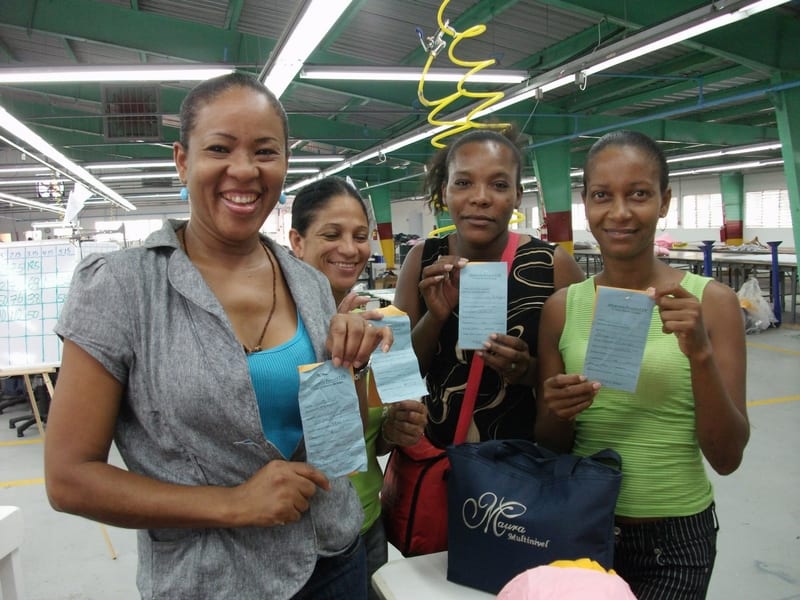
Maritza Vargas, Lucrecia Sanchez Vicioso, Yolanda Simon Marte, and Yenny Perez proudly show their salario digno pay stubs. [Photo: Sarah Adler-Milstein]
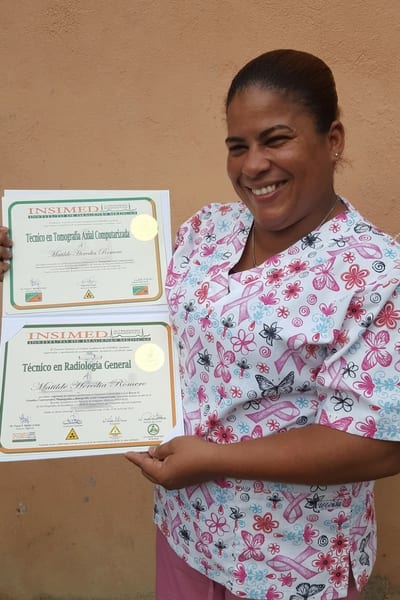
Matilde Heredia’s Alta Gracia job supported her education to become a medical technician. [Photo: Sarah Adler-Milstein]
We share a number of personal stories in the book, but one of my favorites tells about the changes that occurred in Matilde’s life. She was unemployed for years and after her husband died she and her daughters had to rely on family for support. Without insurance there was no money for a medical checkup even though she knew something was wrong. After Matilde was hired by Alta Gracia in mid-2010, a doctor’s visit and follow-up tests revealed she had cancer. Luckily a successful operation removed the cancer before it spread, and Matilde returned to work. With her health restored, she committed herself to a new goal and registered for university classes at night, commuting to the capital at least an hour each way. Alta Gracia cooperated by adjusting her work to facilitate the trip, but her schedule was still demanding. She would usually return home around 11:30 pm, study for a couple hours before sleep, and then awaken at 5 am to prepare for the day’s work at the factory. Matilde’s effort and perseverance paid off. She left Alta Gracia in June 2015 to begin an internship position as a medical technician in Santo Domingo. Two years later she fulfilled the last element of her transformation, returning to Villa Altagracia to work in a small clinic where she can use her training to perform early checks for cancer or other illnesses, giving other community members the same chance at an extended life that she enjoyed.
In what ways can the Jesuit network/Ignatian family better advocate for workers’ rights?
Advocating for workers’ rights generally requires both a strong and sustained voice and effective organizational skills. Both written and spoken voices are needed to retain public attention on the plight of sweatshop workers while applying pressure on the large brand-name firms and retailers whose business practices perpetuate sweatshops. It usually takes a factory fire or building collapse for the term sweatshop to reappear in the headlines. Yet the daily litany of labor abuses continues apace between these periodic tragedies. Letters to the editor, articles, seminars, presentations can all help generate more sustained attention. While keeping the issue before the general public, voices can also speak directly to readily identifiable brand-name apparel companies and large retail firms whose pursuit of low-cost production contracts fuels the inevitable squeeze on workers’ salaries and workplace conditions. As laid out in Sewing Hope’s analysis, Alta Gracia’s experience shows there is no valid excuse for these firms not to require that their outsourced production workers are paid a living wage. Organizational resources can be used to coordinate pressure on the companies while at the same time providing support for the Alta Gracia model. This action can be taken not only by the Jesuit network/Ignatian family, but also by individuals who can encourage the involvement of other groups in which they are members. Many groups mark membership or special events and gatherings with commemorative T-shirts. Placing such orders with Alta Gracia supports the factory’s output; it also provides a better-quality T-shirt that will survive more than two or three washings. Many issues clamor for public attention, but with the emergence of Alta Gracia, there is finally a positive story for Sewing Hope to tell about why and how sweatshops can be replaced by factories that provide a salario digno model.
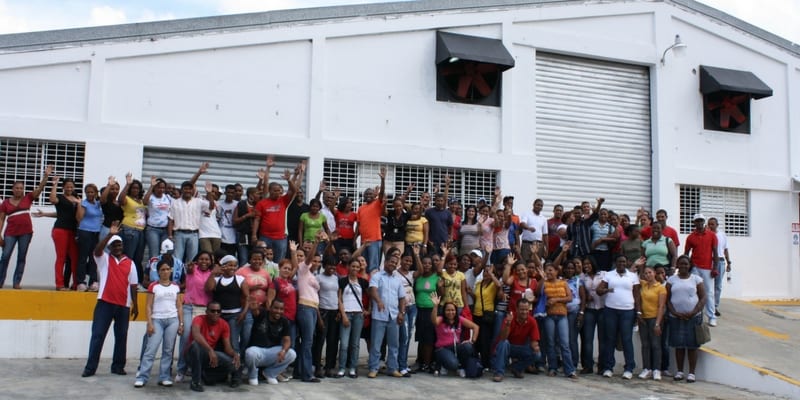
Alta Gracia workers. [Photo: Sarah Baum]
Dr. John M. Kline is a Professor of International Business Diplomacy in the Walsh School of Foreign Service, Georgetown University. His teaching focuses on international business-government relations, investment strategies and negotiations, and business ethics. The 2nd edition of Dr. Kline’s textbook, Ethics for International Business was released by Routledge in 2010 with a Chinese translation by China Renmin University Press in 2013.

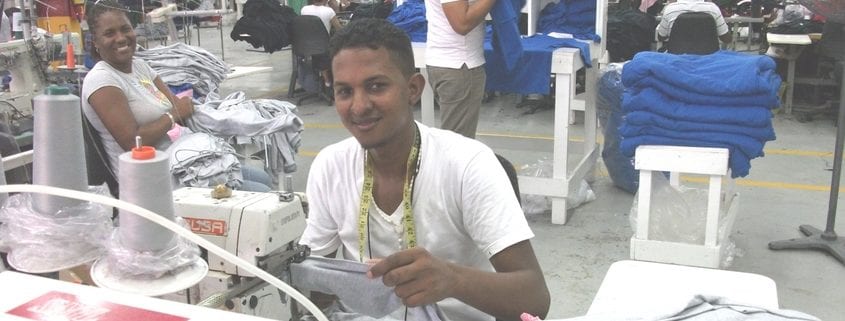


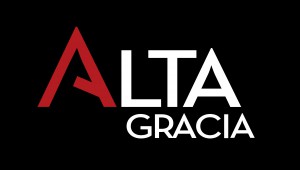




Work is sacred. The labour and the labourer need to be compensated with proper dignity and wages.